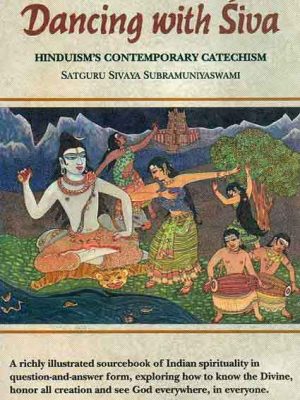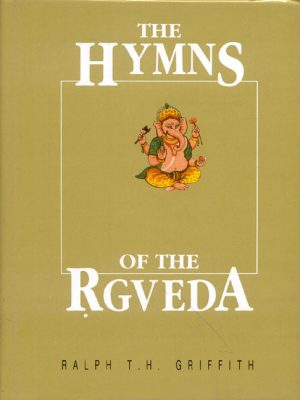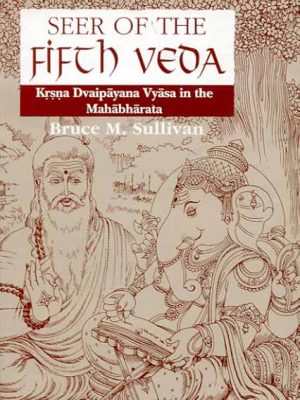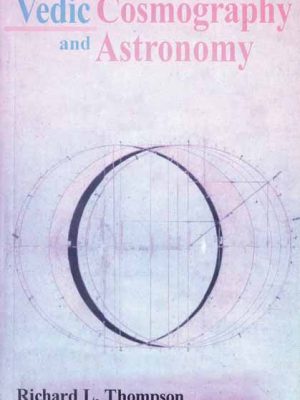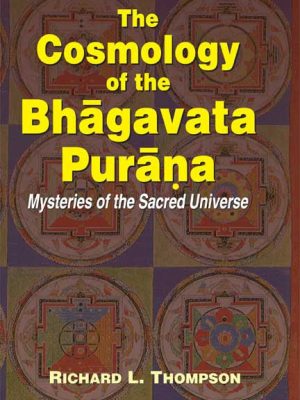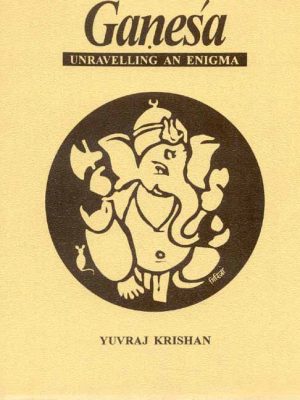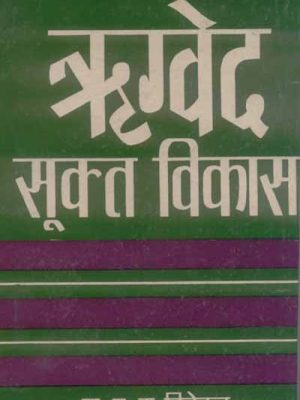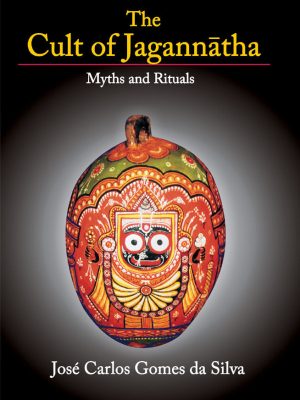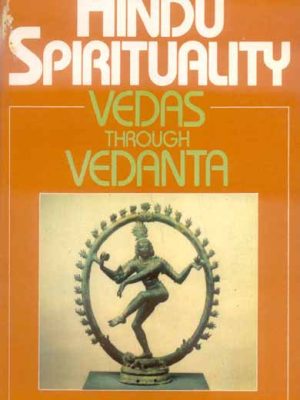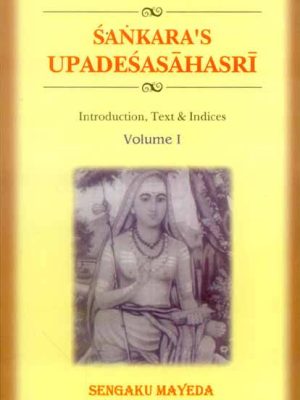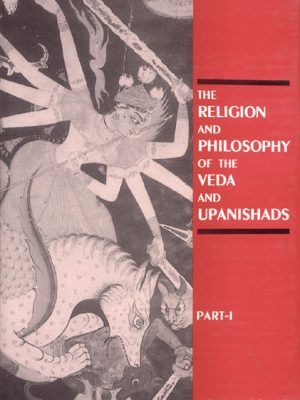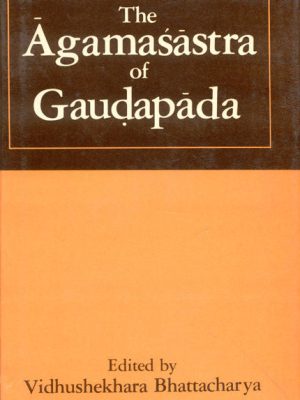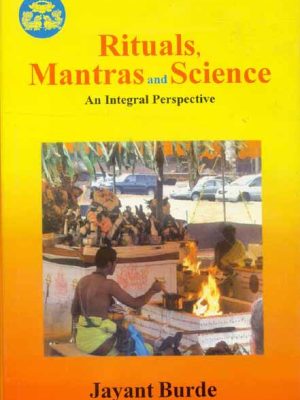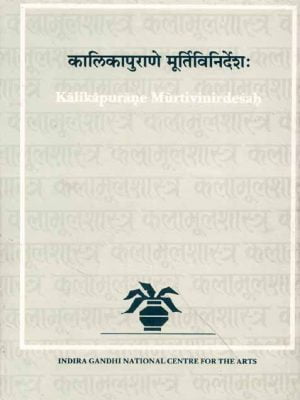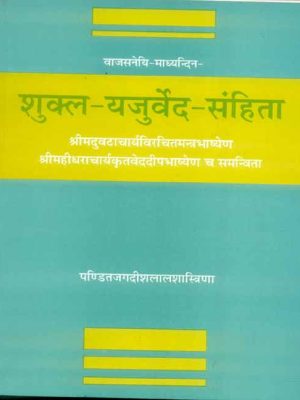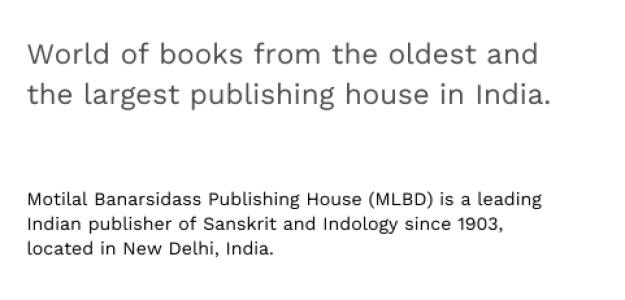
Motilal Banarsidass Publishing House
-
Dancing with Siva: Hinduism’s Contemporary Catechism
Dancing with Siva: Hinduism’s Contemporary Catechism
A question-and-answer formatted reference on Indian spirituality that is vividly illustrated throughout. Topics covered include how to know the Divine, respect all creation, and recognise God everywhere and in everyone.
The Complete Master Course Series This book contains some information that has never been published before, and all of it is pertinent to your own awakening on the road to union with God. You will learn the deepest truths and insights of Indian spirituality inside this book. Dancing with Shiva is the first book of an unique trilogy that is collectively referred to as The Master Course. It represents the culmination of fifty years of yogic realisations and the sharing of the Hindu mystical teachings with aspirants. The trilogy is a comprehensive overview of astanga yoga, which is also known as raja yoga. Astanga yoga is comprised of eight distinct stages, each of which is reliant upon the step that came before it. These eight processes are known as yama (restraint), niyama (surveillance), asana (posture), pranayama (breath control), pratyabhara (sense withdrawal), dharana (concentration), dhyana (meditation), and samadhi. yama means restriction, niyama means observance, and asana means posture (contemplation).
The trilogy elucidates, in clear and concise words, why one must start at the beginning, with a solid foundation consisting of philosophical coherence and moral excellence, and then progress from there. The book “Dancing with Siva” explains the philosophical and Vedic-Agamic ideas, attitudes, and expectations that are central to the Saivite school of Hinduism.
The second book in the trilogy, titled Living with Siva, delves into the Saivite way of life, as well as its culture, family dynamics, the process of developing one’s personality, and the triumph over negative patterns of behaviour. It emphasises on yama, niyama and, in a lesser manner, asana and pranayama (hatha yoga).
Author
₹1,295.00 -
Hymns of the Rgveda
Hymns of the Rgveda
The Rgveda, the earliest written record of the Aryan race and the holy text of the Hindus, has relatively few accurate translations in English. Most of the translations are just the imitations of interpretations which the mediaeval Hindus, as represented by Sayana, have supplied. Griffith’s is the only translation which, albeit led by Sayana, attempts to stray from him considerably and repeatedly. It may be considered as an independent translation heretofore done in English.
But this century old translation needs re-editing, requiring a new version containing advances without hurting the original. In this version the Greek letters have been romanized wherever there are references in the footnotes from the Greek language. The method of transcription has been modified even with relation to Avestan terms in the footnotes, following the system of Bartholomae. The whole translation has been published in a single book for the convenience of the reader. Each and every statistic in the index has been thoroughly examined and amended.
Author
R. T. H. Griffith
₹1,295.00Hymns of the Rgveda
₹1,295.00 -
Seer of the Fifth Veda: (Krsna Dvaipayana Vyasa in the Mahabharat)
Seer of the Fifth Veda: (Krsna Dvaipayana Vyasa in the Mahabharat)
Sage Krsna Dvaipayana Vyasa is generally considered to be the author of India’s most famous epic poem, the Mahabharat, which is written in the Sanskrit language. This research focuses on the portrayal of Vyasa in the Mahabharata, where he plays a significant role in the story that he is credited with writing. The many viewpoints presented in other works of literature, such as plays, Jataka stories, Arthasastra, and Puranas, contribute to an enlargement of the meaning that may be derived from Vyasa’s writings.
Author
BRUCE M. SULLIVAN
₹2,690.00 -
Vedic Cosmography and Astronomy
Vedic Cosmography and Astronomy
The secrets of the Fifth Canto of the Srimad-Bhagavatam have long confused scholars of Vedic cosmography and astronomy. Confronted with a description of the universe that seems much at variance with the information provided by our senses and standard astronomical calculations, foreign observers—and even Indian commentators—from the Middle Ages up to the present have concluded that the Bhagavatam’s account, elaborated in other Puranas, must be mythological. On the other hand, the same folks have been immensely impressed by Vedic astronomical treatises, the Jyotisa Sastras, which offer extremely precise measurements of the solar system. In Vedic Cosmography and Astronomy, Dr. Thompson shows that the Fifth Canto’s cosmography and the accounts of the solar system found in the Jyotisa Sastras are not contradictory, but that they in fact represent distinct yet mutually consistent ways of comprehending a universe with important features beyond the range of ordinary sense perception.
Author
Richard L. Thompson
₹595.00Vedic Cosmography and Astronomy
₹595.00 -
The Cosmology of the Bhagavata Purana: Mysteries of the Sacred Universe
The Cosmology of the Bhagavata Purana: Mysteries of the Sacred Universe
Traditional spiritual literature seem to be married to antiquated cosmologies, such as the flat earth and the sun riding in a chariot, which demonstrate, at best, the scientific limits of the people who wrote them. At first look, it would seem that the Bhagavata Purana, which is considered to be one of the most important religious texts in Hinduism, is not an exception to this rule. On the other hand, a more in-depth analysis of this book shows unexpectedly deep levels of understanding of ancient cosmology. This demonstrates that the cosmology of the Bhagavata Purana is an intricate system, since it has numerous layers of meaning that encode at least four distinct astronomical, geographical, and spiritual world models. Richard Thompson demonstrates how ancient scientists presented accurate information in language that seemed to be mythical by reading the text in light of current astronomy and analysing its implications. The ancient traditions of Egypt and the Near East suggest that India and these countries had early cultural linkages, including a science that was startlingly sophisticated at the time. Nevertheless, quantitative science is just one aspect of the bigger picture. This study also provides a transparent comprehension of the manner in which the spiritual component was incorporated into the cosmology of ancient India.
Author
Richard L. Thompson
₹695.00 -
Ganesa: Unravelling an Enigma
Ganesa: Unravelling an Enigma
The reverence shown to Ganesa is unrivalled among the many indigenous religious systems.
as well as subgroups within the Jainas, Buddhists, and Hindus. He is a deity who stands alone in terms of in a variety of ways, including his unusual physiognomy and his dual nature as a vighnakarta. (the one who causes difficulties), as well as a vighnaharta (remover of obstacles). He is worshipped first in order to guarantee the success of all subsequent religious and secular activities and enterprieses. GAnesa is also worshipped as the deity of music and dancing. The religion that the worship of Ganesa became widespread across Asia. The ascent of Ganesa to the position of preeminence in the canon of traditional Hinduism, as one of the, which is absolutely extraordinary, is comprised of the panca devatas. This is an older form of the phrase. The boring tale of how the White House was built from a log cabin. In recent years, there have been various research conducted on this deity; this one is the most current. textual and linguistically most extensive, completely documented from all original sources, and creative, and packed with beautiful illustrations throughout. It tracks the beginning as well as the progression of pauranika Ganesa, from pre-pauranika Vinayaka, a vighnakarta, into pauranika Ganesa, a vighnaharta, dissects his particular traits and attributes his success to researches how he is portrayed in art not just in India but also in other nations pertaining to Asia. It attempts to solve the riddle of a non-Vedic, non-epic, and a non-historical text a deity of non-Aryan origins being elevated to a prominent position in the Hindu pantheon. The tactics used by devotees of Ganesa to advertise and spread the word about his religion and status and the long-lasting consequences obtained make for an interesting case study in public relations work.Author
Yuvraj Krishan
₹1,195.00Ganesa: Unravelling an Enigma
₹1,195.00 -
Rigvedasukta Vikas
Rigvedasukta Vikas
Rigvedasukta Vikas it focuses emphasis on the social importance of this well-known Hindu text, the current study offers a fresh viewpoint on the Bhagavad-Gita, which is backed by research that was carried out in the past. The first section of this book offers a profound investigation of the ways in which reinterpretations of the Gita played a key part in the social history of India throughout the nineteenth and twentieth centuries. The illustrative material is comprised of five case studies pertaining to the following individuals: Raja Rammohun Roy, Swami Vivekananda, Bal Gangadhar Tilak, Aurobindo Ghose, and Mahatma Gandhi. In Part II, an explanation is given of how the social applications of the Gita are related with its most essential message for the present day, which is known as Loksamgraha and translates to “the good of society.” A contemporary meaning of the lokasamgraha-approach is the inculcation of societal ideals and a feeling of social duty in each person. Lokasamgraha is a Sanskrit phrase that appears in the Gita but not in the Upanishads.
About
₹295.00Rigvedasukta Vikas
₹295.00 -
The Cult of Jagannatha: Myths and Rituals
The Cult of Jagannatha: Myths and Rituals
Orissan ethnography is presented in a fresh light via the lens of The Cult of Jagannatha: Myths and Rituals. This book gives considerable evidence on the significance of religious orthodoxy, which stands in stark contrast to the mainstream interpretations, which centre on the impacts of tribal groups and the history of aryanization. In Orissa, the shift from the coastal to the interior areas is marked by significant demographic and sociocultural discontinuities. These discontinuities may be seen most clearly while moving from the coastline to the inland regions. These geographical variances are presumably a consequence of aryanization that occurred through time. The historical reconstruction of this process has been the primary pillar on which ethnological narratives have traditionally been built. Traditions that developed in the delta plain are said to have been significantly impacted by the local populations who lived there, particularly those traditions that are connected to the delta plain’s two most important centres: the city of Puri and the temple of Jagannatha. The importance of sacrifice symbolism to Puri’s religious system is shown by a number of myths and rites. In spite of the fact that it is explicitly linked to an initial asvamedha, which refers to the sacrifice of a horse in the Vedic tradition, the construction of the big temple is nevertheless seen as a modification of the brick-fire altar. These relationships are further confirmed by an astonishing network of orthodox representations, both Vedic and Hindu. [Citation needed] [Citation needed] This acknowledgment of orthodoxy brings us back to the alleged differences between regional traditions. How should one understand the “specificity” of Puri’s iconography when it comes to his gods? What kind of respect should be accorded to the Sudras who are in charge of the rituals at the major temple? The current book offers fresh insight into these time-honored inquiries, which are addressed. The “strangeness” of Orissan ethnography is not as baffling as it may seem; rather, it is a specific but exceedingly consistent representation of Indian cultural norms and customs.
Author
Jose Carlos Gomes da Silva
₹795.00 -
Hindu Spirituality (Vol. 1): Vedas Through Vedanta
Hindu Spirituality (Vol. 1): Vedas Through Vedanta
The current book is a part of a series called World Spirituality: An Encyclopedic History of the Religious Quest. This series aims to reveal the spiritual knowledge of the human race as it has unfolded throughout history and this volume is a part of that series. It is aimed to demonstrate the autonomy of the tradition in the historical evolution and draws from the greatest level of study from across the globe. The book pulls together and portrays the richness of the spiritual legacy of the human race. This book explores the timeless and unchanging aspects of the Hindu religion. The papers that are included in this book are broken down and discussed according to one of eight categories. The following is a synopsis of the first volume of Hindu Spirituality: The Vedas by Way of Vedanta In this research project, a social and cultural anthropologist as well as an expert in the field of the study of religion collaborated in order to investigate recent shifts that have occurred in the religion practised by the majority of people in Sri Lanka. According to the perceptions of the Sinhala people themselves, Buddhism proper has always coexisted in the religious sphere with a spirit religion. While redemption is central to Buddhism, the spirit of religion is more concerned with the flourishing of the world. Buddhism Transformed is a book that provides a description and analysis of the developments that have significantly impacted the nature of the Sinhala religious practise in each of these places. This book is the first of its kind to describe in a methodical manner the cultural effects of the degradation in the way that the “other half” of the population in Sri Lanka lives. Following the country’s independence in 1948, significant progress was made in the areas of health care and literacy, but the country’s economy was unable to live up to the soaring aspirations of the country’s rapidly growing population. People fell into poverty and were more mobile, which contributed to the decline of the village community. Changes have taken place in what the authors refer to as “Protestant Buddhism” as a result of the emergence of new psychological requirements brought on by new strains in Sri Lankan society (the Buddhism formed under Protestant influence after British conquest). More and more individuals are interested in and appreciate altered states of consciousness, and among spirit cults, gods with less stringent moral standards are rising to prominence. The authors conclude by arguing that occurrences in Sri Lanka that first seem to be unusual in the religious history of India are, in fact, not entirely new.
Author
Krishnan Sivaraman
₹795.00 -
The Upadesasahasri of Sankara: 2 Volumes: Introduction, Text and Indices
The Upadesasahasri of Sankara: 2 Volumes: Introduction, Text and Indices
It is widely agreed that Sankara, an Indian philosopher who lived in the eighth century, was the greatest thinker in the lengthy history of Indian philosophy as well as in the metaphysical tradition known as Vedanta. Sankara is credited with founding the Vedanta school of thought. The Advaita or non-dualist approach to the issue of existence and ultimate reality is emphasised in the Advaita Vedanta school or philosophy, which was developed by him. For hundreds of years, this way of thinking has been the dominant school of thought in India.
The majority of Sankara’s writings are comments on other great works of Indian philosophy, such as the Brahmasutra, the Bhagavadgita, and the Upanisads. The Upadesasahasri, also known as “A Thousand Teachings,” is the only independent and non-commentary work that can be safely attributed to him; the other independent writings that have traditionally been ascribed to him are all probably spurious. The Upadesasahasri, also known as “A Thousand Teachings,” has been critically edited and translated into English here.
Sengaku Mayeda, the author of this work, has provided both academics and general readers with a critical edition based on the analysis of 27 metrical and 11 prose manuscripts, as well as an exact and readable English translation of the work based on his definitive edition of the work, in addition to his extensive introduction to the work. These materials can be found on this website. This Indian philosophical classic is now available to a far larger audience thanks to his lucid and trustworthy translation as well as his in-depth introduction that discusses Sankara’s biography as well as his ideas.
Author
Sengaku Mayeda
About the Author(s)
₹1,495.00 -
Religion and Philosophy of the Veda and Upanishads (2 Vols.)
Religion and Philosophy of the Veda and Upanishads (2 Vols.)
This publication gives an account that is both thorough and brief of the whole of the religion and philosophy that existed in India throughout the Vedic era. Any anyone who is serious about their study of religion and philosophy will find this book to be a very helpful and comprehensive source of information. This massive effort has been undertaken with the intention of reestablishing the Vedic religion to its rightful position in the field of theological research.
About the Author(s)
Arthur Berriedale Keith
₹1,795.00 -
The Agamasastra of Gaudapada
The Agamasastra of Gaudapada
Because the author was dissatisfied with the interpretation provided by Sankara and his followers as well as the interpretation provided by some other teachers, he has made an effort in the following pages to present to the readers his own interpretation of the work based on how he has understood it. On the other hand, he makes no claim whatsoever that his interpretation is the interpretation, in other words, the meaning that Gaudapada himself had in mind. The author of the current book has provided a fresh edition of the text of the Agamasastra based on a number of distinct manuscripts and editions, which is then followed by an English translation of the text. His annotation follows immediately after this. Appendices are included at the conclusion of the book and include the text of the Mandukya Upanisad as well as an English translation of it. Additionally, there are many distinct indexes and versions of the MSS that were used to create the edition of the Agamasastra text.
About the Author(s)
Vidhushekhara Bhattacharya
₹895.00The Agamasastra of Gaudapada
₹895.00 -
Rituals Mantras and Science: An Integral Perspective
Rituals Mantras and Science: An Integral Perspective
The author of this book explores the role that science plays in various rituals and mantras during the course of the book. Through the use of structural analysis, he demonstrates that rituals in general, regardless of whether they are religious, political, social, or any other kind, all have similar basic characteristics. Language is the only art form that does not share these patterns; poetry, music, dance, and gymnastics all do. After taking into account animal rituals as well as rituals that are associated with pathologies, he came up with a basic theory that unified all actions that resemble rituals.
Author
Jayant Burde
₹695.00 -
Kalikapurane Murtivinirdesah
Kalikapurane Murtivinirdesah
The Kalikapurane Murtivinirdesah is the ninth volume in the series of the kalamulasastra project. It is a collection of around 550 lines from the Kalika Purana. These verses include a bodily description of a variety of gods, goddesses, and demi-gods, as well as other beings. Some of them are just abstract ideas, while others are embodied as sculptures made of stone and metal.
The Kalika Purana is a significant upa-purana that has been cited as an authoritative source by the smrti digest authors (nibandhakaras) from almost every region of India. The Kalika Purana is a text that was created in ancient Assam (Kamarupa) in the late ninth or early tenth century A.D. Its purpose was to exalt the mother goddess Kamakhya and to offer a ceremonial system for worshipping her. The Kalika Purana focuses mostly on describing the many incarnations of the goddess, along with providing specifics of their iconography, as well as their horses and weapons. Additionally, it discusses the representations of other gods and goddesses that were housed in Kamarupa. In order to provide a comprehensive picture, all of the verses that deal with the gods and are spread out among the many chapters of the Kalika Purana have been collated according to the gods. The Sanskrit verses are presented with an accurate translation of those verses into English.
Author
Dr. Biswanarayan Shastri
₹395.00Kalikapurane Murtivinirdesah
₹395.00 -
Shukla-Yajurved-Samhita
Shukla-Yajurved-Samhita
The Yajurveda Samhita, also known as the prayer book of the Adhvaryu priest, is said to have had as many as 101 recensions during the time of the grammarian Patanjali. However, only five of these recensions have survived and are available at this time. These recensions are known as Kathaka, Kapisthala, Maitrayani, Taittiriya, and Vajasaneyi. The first four of these recensions belong to what is designated as the The Vajasaneyi Samhita, which gets its name from Yajnavalkya Vajasaneya, the principal instructor of this Veda, has been passed down in two forms that are somewhat different from one another. These versions are known as the Kanva Samhita and the Madhyandina Samhita. The primary distinction between the texts of the ‘Black’ and ‘White’ Yajurveda is that the latter only includes the Mantras, which are the prayers and sacrificial formulae that the priest is required to recite, whereas the former includes, in addition, a presentation of the sacrificial rites that are associated with them as well as the Brahmana, which is a theological discussion on the same topic. This is the most important distinction between the two types
About the Author(s)
Pandit Jagdishlal Shastri
₹1,495.00Shukla-Yajurved-Samhita
₹1,495.00
